Astrolabe 23: Don't wait, read.

Endless books, endless worlds, endless possibilities
Recently, I made an offhand joke on Twitter that gained wings and went mini-viral among the SFF reading community. This, of course, summoned The Discourse.
The tweet in question (below) suggested that anyone who complains about the long delays between volumes in popular fantasy series by white dudes should, instead, use that energy to head to the bookstore and buy the first volume of a completed epic fantasy series by a non-male or BIPOC writer.
(Or writers from queer, disabled, or otherwise marginalized community. I used the non-male and BIPOC communities in my example because I know the three authors mentioned all self-identify as white men, but don't know their self identification along other axes such as sexuality.)
I think it's a good rule.
Every time you complain about Martin, Rothfuss, or Lynch taking a long time to complete their series, you have to buy the first volume of a completed epic fantasy series by a non-male or BIPOC author.
— Aidan Moher (@adribbleofink) 9:36 PM ∙ May 7, 2022
There are SO many good series out there seeking a broader audience. Waiting around for any book—especially to the extent of heading online to write negatively about the author(s), or, even worse, harrass them directly—feels like self-selected flagellation. There's no reason not to have a tottering to-read pile filled with amazing books from amazing writers across many diverse communities.
That, of course, led to a lot of really great recommendations from other readers. Like these:
@adribbleofink Dragon Prince, by Melanie Rawn. Daggerspell, Katharine Kerr. Camber of Culdi, by Katherine Kurtz. Alanna, by Tamora Pierce. Sheepfarmer’s Daughter, by Elizabeth Moon. Assassin’s Apprentice, by Robin Hobb.
— Joe (@joesherry) 2:57 AM ∙ May 8, 2022
@Zahndethus @adribbleofink Tons of great suggestions already named. Adding:
— Jenn Lyons (@jennlyonsauthor) 5:47 AM ∙ May 8, 2022
K. A. Doore's The Chronicles of Ghadid trilogy
N. K. Jemisin's Inheritance Trilogy
Alexandra Rowland's A Conspiracy of Truths Duology
Tasha Suri's The Books of Ambha Duology
@adribbleofink Since this is a thread full of recs: the A Chorus of Dragons series by @jennlyonsauthor is an excellent rec and the final book in the series just released last month. I share this series with any patrons who will listen. SO GOOD.
— jowithtwoiis (@jowithtwoiis) 3:49 PM ∙ May 11, 2022
I'm currently reading Jenn Lyons's The Ruin of Kings, and it's actually the book that inspired my original tweet.
Even Lynch himself got in on the game:
@matociquala @adribbleofink If you're mean to me the penance is that you have to go buy something by Gael Baudino, Elizabeth Lynn, Charles Saunders, Melanie Rawn, Tanith Lee, Kristen Britain, Sofia Samatar, Patricia McKillip, C.L. Moore, Barbara Hambly, or Melissa Scott. I don't make the rules.
— Scott Lynch (@scottlynch78) 11:45 AM ∙ May 8, 2022
It also brought really great perspectives from writers like Jeremy Szal pointing out why it's vital to support series from marginalized writers early on—because they might not get to finish them, otherwise:
Or even an incompleted series, because some of us won't get enough sales to finish publishing the entire series. Which becomes a self-fulfilling prophecy.
— Jeremy Szal is on a deadline (@JeremySzal) 12:00 PM ∙ May 9, 2022
If you want us writing diverse books, then please vote with your wallets.
It also led to another reply I'm very familiar with. It was the reply I would've made several years ago: "I don't pay attention to gender/ethnicity/etc., I just read what looks good."
I used to think this way, until I questioned why—if I was truly colour/gender-blind—my Goodreads stats showed I read 80% white dudes. The industry (& the world) is heavily tilted toward white men. If you don’t make these choices consciously, someone else makes them for you.
— Aidan Moher (@adribbleofink) 4:00 AM ∙ May 8, 2022
As I explain in my tweet, I used to think this way. I prided myself on being colour/gender/sexuality/whatever-blind. This, I thought, was the height of egalitarianism.
Except, it's not.
What this viewpoint fails to acknowledge or compensate for is that while you might feel perfectly unbiased, you're impacted by larger, systemic choices made by the publishing industry, marketing departments, other buyers, general society, etc. The deck is stacked against marginalized writers in favour of white male writers, so not making a choice cedes control of your "to-read" pile to other people who will happily make those choices for you.
I figured this out several years ago when I made a conscious choice to analyze my Goodreads statistics. I very quickly realized that despite my best intentions, I was reading about 66% straight white cis guys (mostly American, too.) Over years as a reader, I'd developed favourites, almost all of whom were the beneficiaries of a publishing industry that pushed the works of white men above all others. Tad Williams, Terry Brooks, George R.R. Martin, etc. I'd read all their books, which took up a chunk of my overall reading volume, and paid close attention to their receommendations (or the algorithm's recommendations, which were, of course, shaped by past behaviour.
If I was colour blind, why were the majority of the books I'd read in a given year written by white writers? If I was gender blind, why did I read books by male authors at a rate of two times that of female or non-binary authors? If I was blind to sexuality, why were so few of the books I read written by queer authors? Because I'd ceded those decisions others. Rather than being unbiased, I was steered by the biases of an industry historically shaped around the voices of white cis men. So, I change that. I made a conscious to start pushing towards a more balanced breakdown of authors across a few different spectrum.
And, you know what? A funny thing happened.
I found new favourite authors. I listened to their recommendations and discovered new books. The algorithms adjusted. Eventually, it's become self-correcting. After a few years of conscious decision-making to adjust for market biases, it's now pretty effortless to end the year with a Goodreads challenge full of writers who are queer, non-binary, women, BIPOC—alongside the white guys I still love.
The kicker? The quality of my reading has only improved by doing this. So, forget the idea that reading "quotas" undermine the "meritocracy," and embrace the idea that we're all impacted by unconscious market biases. Confront your reading habits. Make a choice.
Then, come back in five years and tell me how it's changed your life as a reader. Because I guarantee you'll be happy you did.
Don't wait. Change your habits. And just read.
Out & About
(Out & About is where I highlight my work around the web—some recent and some old favourites.)
15 Modern Pixel Art Games Everyone Must Play — lifehacker.com Polygons? We don't need polygons. I don't need to show you any stinking polygons.
Piggybacking on my Wired piece about the ethos of modern pixel art, I had the pleasure of rounding up 15 of my favourite pixel art games for modern consoles for Lifehacker.
These games aren’t only feeding our hunger for nostalgia—they’re creating modern experiences, with gameplay and audiovisual elements every bit as impressive (and popular) as their flashier 3D counterparts. With more than 15 million sales worldwide, indie hit Stardew Valley is just one example of pixel art games’ rising popularity over the past decade, opening doors for a whole new generation of creators to build off of classics from the ‘70s, ‘80s, and ‘90s. They look retro, but offer new experiences impossible to replicate on old hardware.
This list could've been three times as long, and I still would've felt like I was leaving off too many great games. But if you want to see the flexibility, scope, and beauty that modern game designers and artists can squeeze out of pixel art, these games'll do it.
Read "15 Modern Pixel Art Games Everyone Must Play" on Lifehacker
LTTP—Radical Dreamers (Super NES, 1996)
( LTTP stands for “Late to the Party” and is a regular column where I let Twitter decide which retro game I’ll play for an hour. Do your worst, Twitter!)
Last issue, I visited a classic Japanese RPG that's soon to be officially released in English for the first time in Live a Live. This time around, I stuck with the "Holy crap, we're finally gonna get to play this in English 25 years later?" category with Radical Dreamers—a pseudo-sequel to Chrono Trigger that, until the release of Chrono Cross: Radical Dreamers Edition in April, 2022, had been only available to English-speaking players via Demiforce's fan localization.
With the game decided, I polled Twitter to decide on the format for my playthrough, and the new remaster won out quite handily over the fan translated original. So, here we are, finally playing Radical Dreamers.
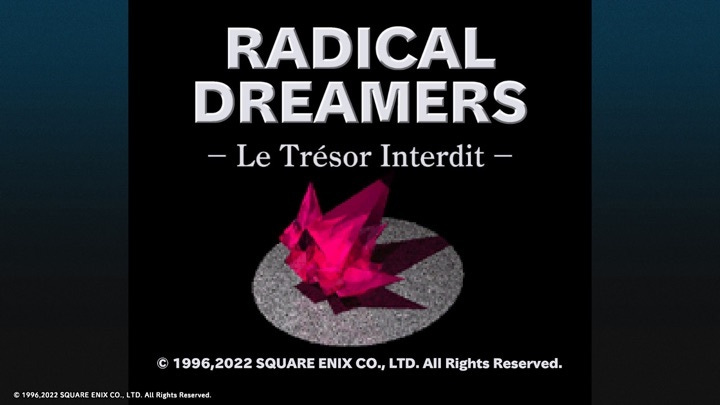
Given my well documented, lifelong love of Chrono Trigger, it might surprise you to hear I've never actually played its first sequel.
"But, Aidan, what do you mean "first" sequel?"
Released in 1996 for Nintendo's Japanese satellite download service, Satellaview, Radical Dreamers was a follow-up to Chrono Trigger that changed, well... pretty much everything that made Chrono Trigger so beloved. First of all, it's a text-heavy visual novel set in a single location—not a time-hopping JRPG. It features Serge, Kid, and Magil (a vaguely disguised Magus, Chrono Trigger's popular anti-hero) as they infiltrate Viper Manor in search of the mysterious Frozen Flame. Sound familiar? It should. It was used by creator Masato Kato as the basis for Chrono Trigger's second sequel, Chrono Cross.
While its story wraps up in about three hours, and is much more limited in scope than Chrono Cross's (though, what isn't limited in scope compared to Chrono Cross?), there's a lot stuffed in there, and it provides a glimpse at the creative process that led to Chrono Cross's vast departure from Chrono Trigger. Though it features many similar characters, settings, and plot elements with both games, in many ways Radical Dreamers feels more tonally consistent with its predecessor than its big sibling Chrono Cross does.
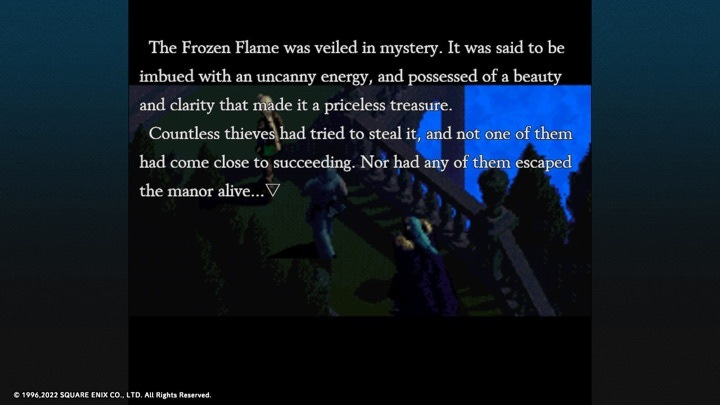
In a lot of ways, Radical Dreamers reminds of a similarly text-heavy game I love: Yasumi Matsuno's Crimson Shroud. Both games are text-driven visual novels where the player wanders through a small dungeon—complete with combat encounters and branching dialogue choices. Like Matsuno, Kato is known for complex stories, and well loved by fans of golden age RPGs for his work on games like Xenogears, Baten Kaitos: Eternal Wings and the Lost Ocean. His experience shows here with a story that touches on many of the same themes as Chrono Cross, but without the mind meltingly weird stuff that bogs down the end of that game.
Ever wanted to have Masato Kato or Yasumi Matsuno as your DM for the evening? These games are your chance.
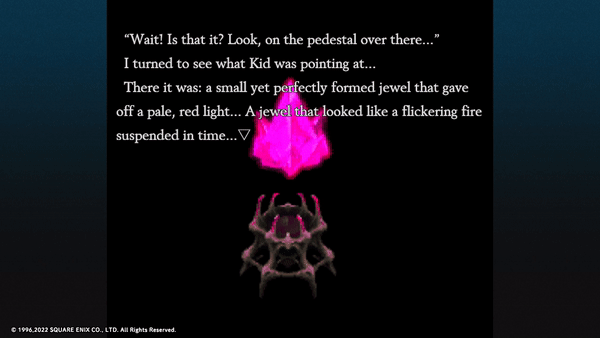
As a long time Chrono Trigger fan, and a conflicted Chrono Cross miser, Radical Dreamers is a look at an alternate universe. From its familiar yet surprising story, clear callbacks to Chrono Trigger, and twisted takes on the events from Chrono Cross, Radical Dreamers is a delightfully deep cut. The gameplay is a barely adequate delivery device for its fun, well written story, but it's impossible as a Chrono Trigger fan not to grin in delight seeing a canonical answers to one of the most high profile dangling threads from its otherwise tightly wrapped-up plot.
Is there enough here for newcomers to the Chrono series? Doubtful. Radical Dreamers's best bits rely on intimate knowledge Chrono Trigger and Chrono Cross's overlapping stories, and nostalgia for those games makes stomaching the archaic gameplay a lot more tolerable. But I've sure been enjoying it.
Radical Dreamers was first released by Square in 1996 for the Super NES's Satellaview peripheral. It received a popular fan translation in 2005, but Chrono Cross: Radical Dreamers marks its first official English release. It's available now for Nintendo Switch, PlayStation, Xbox, and PC.
Recommended Read
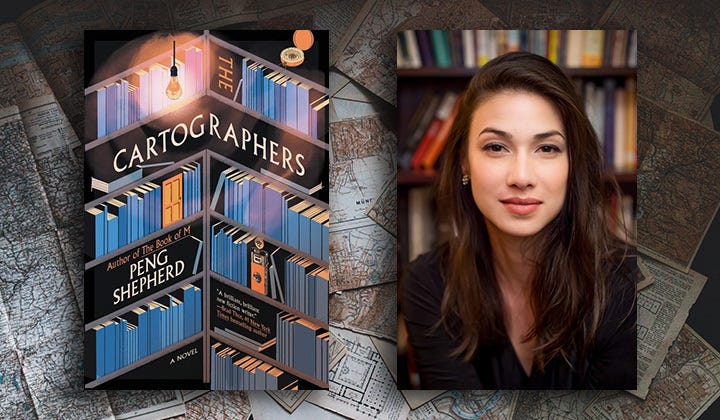
The Cartographers by Peng Shepherd
After an impressive debut with The Book of M, Peng Shepherd's second novel, The Cartographers is a labyrinthine love letter to academic passion, maps, and the journeys we must take to find not only destinations, but ourselves. Nell Young's whole life was maps, until it wasn't. Years after being exiled from the New York Public Library and the world of cartography by her famous father, Nell returns to the world she left behind to investigate the mysterious, and possibly nefarious, circumstances leading to her father's death. What she finds challenges not just her understanding of academic cartography, but how the art itself shapes the world around us.
Thanks to Shepherd's clear, musical prose, instantly relatable characters, and a core concept that puts its own twist on a recognizable thriller structure, The Cartographers is a joy to read from start to finish. It'll satisfy readers who enjoy the puzzle-box nature of Dan Brown's mega-popular novels, the slow unpeeling of history, like that found in Carlos Ruiz Zafon's The Shadow of the Wind, or the magical realism of Isabel Allende. Shepherd weaves these elements together into a book that's literally impossible to put down, and wraps up leaving you wanting—begging—for more maps and worlds to explore.
Quest Markers
(Quest Markers is a collection of the coolest stuff I’ve read around the web lately.)
- Brandon Sanderson, fame, and the failure of the Long Tail (Unsettling Futures)
- The Most Distant Known Star in the Universe is Named After a Tolkien Character - Here's Why (IGN)
- The 12 gnarliest dinosaur kills in Jurassic movies (Polygon)
- YouTube: The Story of Super Mario World (Gaming Historian)
- Experts warn about rising extremism in gaming (Axios)
- The Four OG Hobbits Reunited for the First Time in 10 Years (and We Were There) (IGN)
- What I Learned From Breaking Up With D&D (Tor.com)
- How A Book Is Made (New York Times)
- The Power of Mortality in Margaret Weis and Tracy Hickman’s Dragonlance Chronicles (Tor.com)
- An Unsung Hero of Gaming History Deserves a Higher Profile (Wired)
- YouTube: Creating The Art Of Final Fantasy 9 (MinnMax)
- 10 years later, Legend of Korra is still “polarizing” TV — and it’s never mattered more (Inverse)
End Step
So, what's on your update to-read pile?
Support
There are lots of ways to support Astrolabe and my other work. Check ‘em out!
Keep In Touch
Enjoy Astrolabe? Want more SFF and retro gaming goodies? You can find me on Twitter and my website.
Credits
Astrolabe banner photo by Shot by Cerqueira on Unsplash


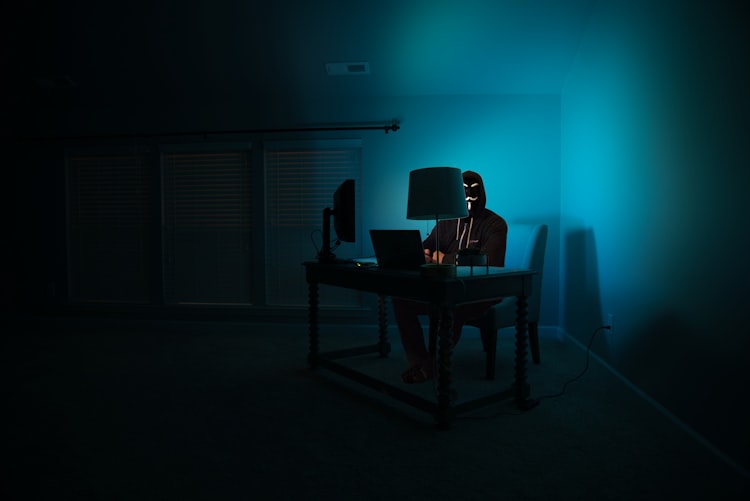



Member discussion